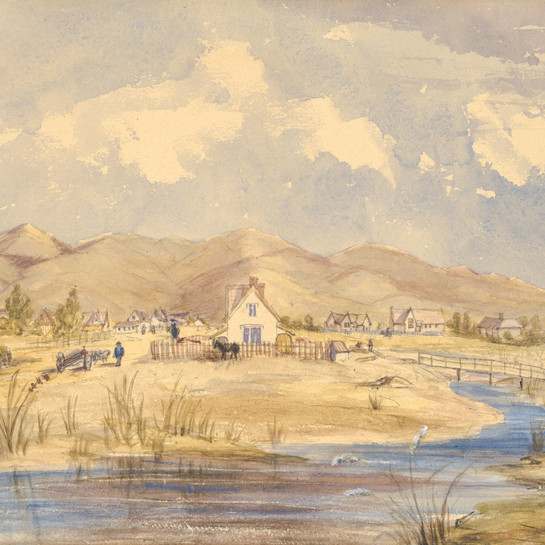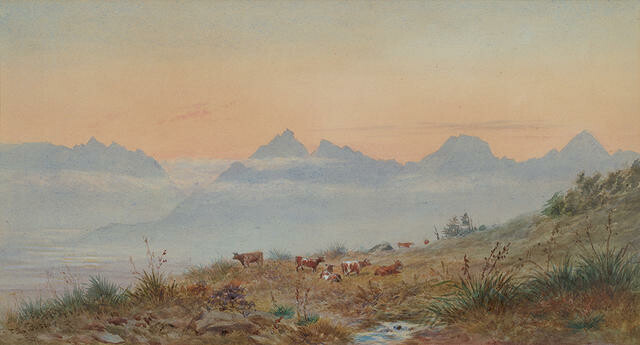Thomas Selby Cousins
British / Aotearoa New Zealand, b.1840, d.1897
The Forks of the Rakaia
- c. 1880
- Watercolour
- Purchased, 2001
- 2001/135
- View on google maps
Location: Sir Robertson and Lady Stewart Gallery
Tags: animals, cows (mammals), landscapes (representations), mountains, natural landscapes, rivers, sunset
In June 1848, Kāi Tahu were pressured to sign the Canterbury Purchase, or Kemp’s Deed, facilitating the aggressive Crown acquisition of nearly five and a half million hectares of land for two thousand pounds, with just over two and a half thousand hectares left in reserve. Some forty years later, when popular Ōtautahi Christchurch artist Thomas Cousins painted this scene, much of Waitaha Canterbury had been transformed into farming territory, dotted with high country stations raising livestock. This change underpinned the careers of many settlers, including politician William Rolleston, who had purchased a sheep run here at the Forks of the Rakaia in 1861.
Kāi Tahu ~ tribal group of much of Te Waipounamu South Island
He Kapuka Oneone – A Handful of Soil (from August 2024)
Exhibition History
Thomas Cousins arrived in Canterbury around 1863 and was employed as a shearer by the Acland family at Peel Forest Station in South Canterbury for a short time. The Rakaia Forks is the name of the junction of the Wilberforce and Rakaia Rivers in the Southern Alps of central Canterbury. The rugged, mountainous scenery of the region provided the romantic imagery that appealed to Cousins.
Cousins was a popular figure in the Christchurch arts scene of the 1870s and 1880s. Little is known of his training but his father and uncle were established artists who would have encouraged his interest in art from a young age.
Cousins was born in England and was the son of the wood engraver Henry Cousins. He emigrated to Canterbury for health reasons around 1863, where he worked as a watercolourist and was also employed as a black and white illustrator. He was a founding member of the Canterbury Society of Arts and exhibited in the Society’s first exhibition in 1881. He moved to Dunedin around 1885 where he remained until his death.
(Label date unknown)


